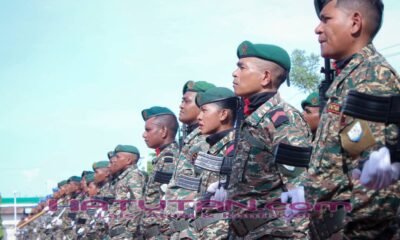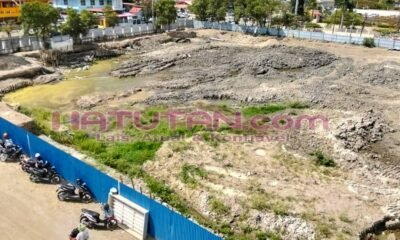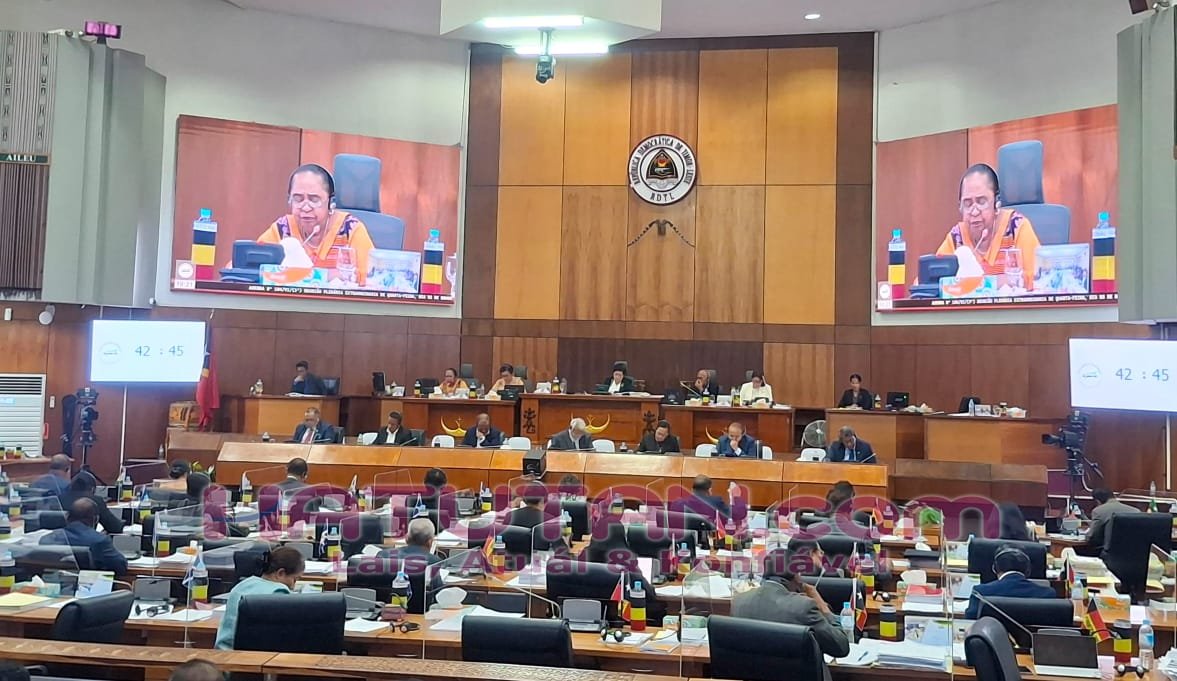By: João da Cruz Cardoso
This year chairmanship of the Association of Southeast Asian Nations (ASEAN) is held by Malaysia with “inclusivity and sustainability” as the theme. Analysis of the strategies outlined by the Chair for this year indicates that economy is still the focus of the block given that the priorities include trade expansion, investment linkages, and fostering digital transformation, among others.
Meanwhile, the current dynamics in the world’s politics and global economy, particularly with the Trump’s presidency in the US and China’s growing influence, presents a unique challenge for ASEAN considering that it has built strong political and economic cooperations with both countries. For instance, ASEAN-United States Comprehensive Strategic Partnership (CSP) provides the platforms to discuss geopolitical issues through existing mechanisms such as ASEAN-U.S. Summit, ASEAN-U.S. Dialogue, and the ASEAN-U.S. Joint Cooperation Committee (JCC) Meeting. Similarly, it has forged and sustained discussions on political affairs with China through ASEAN-China Joint Cooperation Committee (ACJCC) and the ASEAN-China Senior Officials’ Consultation (ACSOC). ASEAN has also engaged both countries to forge cooperation over security affairs through ASEAN-led mechanism including the East Asia Summit (EAS), the ASEAN Regional Forum (ARF) and the ASEAN Defence Ministers’ Meeting Plus (ADMM-Plus).
In terms of economy, both countries are ASEAN major trading partners. It is estimated that US goods trade with ASEAN totalled US$476.8 billion in 2024 of which US$352.3 billion (74 per cent) were the value of US good imports from ASEAN (a trade surplus for ASEAN). Today, the US is the largest export market for ASEAN given that it is the destination of 15 per cent of ASEAN’s exports. Similarly, ASEAN is China’s largest trading partner as it accounted for 15.9 per cent of China’s total foreign trade (worth US$468.8 billion) in 2023. In contrast to the US, China holds a trade surplus with ASEAN.
However, the benefits gained from trade is now under serious threat due to tariff being imposed on ASEAN countries by the US government. The Prime Minister of Singapore, Lawrence Wong, has called for the country to anticipate shocks caused by the tariff on most goods imported into the US because it will severely affect its trade dependent economy and may trigger global trade war. In response to tariff from the US, some propose a hybrid approach where ASEAN should raise common voice highlighting shared concerns, but allowing member states to negotiate individually based on their own interests. This, unfortunately, confirms the hypothesis where ASEAN is not considered as major player due to internal fraction. This explains why the US does not hesitate to imposes different tariff on ASEAN countries where six members are imposed tariff above 30 per cent including Cambodia 49 per cent, Laos 48 per cent, Vietnam 46 per cent, Myanmar 45 per cent, Thailand 37 per cent and Indonesia 32 per cent. Only Singapore has been imposed with 10 per cent tariff.
In the midst of this dynamic, the theme “inclusivity and sustainability” is timely and serves as a wake-up call for ASEAN to take concrete action to strengthen its cohesiveness and unity. This will enable ASEAN to respond collectively to the changes in the world order that comes with global economic impact, and at the same time, provide the much-needed drive for the block to work towards achieving its centrality, providing a stable platform to navigate through the complexity of global challenges.
Therefore, during its chairmanship, Malaysia must ensure that ASEAN engages in an open and honest discussion, and take serious actions to iron out challenges that can weaken its cohesion. These challenges mainly stem from internal frictions that can disintegrate the block further if not addressed and dealt with comprehensively.
The first challenge is the Myanmar crisis that serves as a test for ASEAN’s ability to resolve its own internal conflict, and it would carry more weight if ASEAN is able to do so without outside intervention. However, ineffective implementation of ASEAN’s Five-Point Consensus and differing approaches of the ASEAN countries towards Myanmar has constrained the block to resolve the crisis. In response to this situation, there are calls to take new approach including ASEAN-plus response that involves external power, creating permanent secretariat to ensure consistency in the block’s approach and disrupting trade activities particularly flows of arms and related supplies into Myanmar. Regardless of the circumstances, Five-Point Consensus remains relevant because ASEAN must make every effort to end the violence in Myanmar and bring all the conflicting parties to the discussion table because a long-lasting peace and stability can only be achieved when it is initiated from within, not imposed externally.
Secondly, ASEAN must address the issues surrounding the Mekong River seriously because the collapse of the ecosystem has detrimental impact on the regional food and water security with political repercussion. The Mekong River runs through five ASEAN members: Myanmar, Laos, Thailand, Cambodia and Vietnam, and if the use of the resources and development of infrastructure for economic gains are not coordinated based on the “one Mekong River system principle”, it can constraint the relations of these neighbouring ASEAN countries. A recent study indicates that there has been experience of significant reductions in rice crops and fish catches in Cambodia partly due to hydropower dam construction in the upstream area. Countries like Laos favour dam projects because of expected economic benefits gained from exporting cheap electricity while opposing views highlight the threat of dams to the fishery sector such as in the Lower Mekong Basin, which is estimated at a total value of US$17 billion per year.
The transboundary nature of the Mekong River requires intensive discussion about the trade-offs, but at the same time, it presents a unique opportunity for ASEAN to widen economic opportunities for the lesser developed Mekong countries and forge regional mechanisms to engage with external powers. That way, it is able to streamline individual cooperation mechanism with the interest of the block, which affords the freedom for individual country to pursue their objectives, and in the meantime, preventing external powers from exerting their own agenda.
The third challenge is the issue of South China Sea (SCS) because it exacerbates distrust among ASEAN members that have territorial and exclusive economic zones (EEZ) claims including Vietnam, the Philippines, Malaysia and Brunei. The recent stand-offs between the Philippines and China does not only reveal dispute with China over its claims through the “nine-dash line” demarcation, but also exposes lack of assertive position from ASEAN to support its fellow members. This situation forces the country like the Philippines to seek help from other external powers such as the US by establishing Enhanced Defence Cooperation Agreement (EDCA), strengthening the US military presence in its territory as a deterrent strategy. The dispute with China over SCS, in hindsight, provides the cover for the claims among the ASEAN members, which have the potential to cause conflict that can further minimize the block’s unity.
Lastly, the ten-country block also needs to address intra-relational factors that can negatively affect its cohesion. One cannot help but notice subtle power relations difference among the members, partly due to different level of human, infrastructure and technological development. This can cause inferiority sentiments among the lesser developed members, which may hinder them to fully exercise their chairmanship role. ASEAN must ensure that the members assuming the chairmanship role carry the same weight regardless of the level of development, creating conducive environment for consensus building to advance its interest.
Considering current global situation, ASEAN must realize that the safest option is to strengthen itself both politically and economically by maximizing opportunities presented by its vast market (676.6 million population and US$3.8 trillion GDP). The tarif imposed by the US shows that ASEAN cannot be overly dependent on trading relations with external major power, but rather, it needs to expand trade activities among the block. Politically, the crisis in Myanmar provides an important lesson for ASEAN to create an internal mechanism to address arms conflict within its region, allowing quick response by the block.
Since its formation in 1967, ASEAN has been successful in preventing full-scale war between countries in the region, which has created a favourable condition for the region to thrive. The time and circumstances are now changing, and it requires the block to change as well. The question is whether or not ASEAN is ready to make necessary changes to address internal difference and become a major player to cement its centrality. This is a task that must begin with Malaysia chairmanship. ***


 Polítika1 week ago
Polítika1 week ago
 Liquiça4 days ago
Liquiça4 days ago
 Saúde1 week ago
Saúde1 week ago
 Saúde1 week ago
Saúde1 week ago
 Defeza & Seguransa1 week ago
Defeza & Seguransa1 week ago
 Dili3 days ago
Dili3 days ago
 Dili6 days ago
Dili6 days ago
 Dili1 week ago
Dili1 week ago



















Charles Scheiner
23/05/2025 at 2:32 AM
Joao wrote: “Since its formation in 1967, ASEAN has been successful in preventing full-scale war between countries in the region… ”
But not the war between Indonesia and Timor-Leste, which most ASEAN members prolonged by supporting Indonesia’s illegal and brutal occupation.